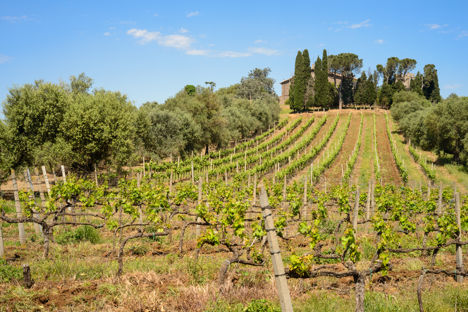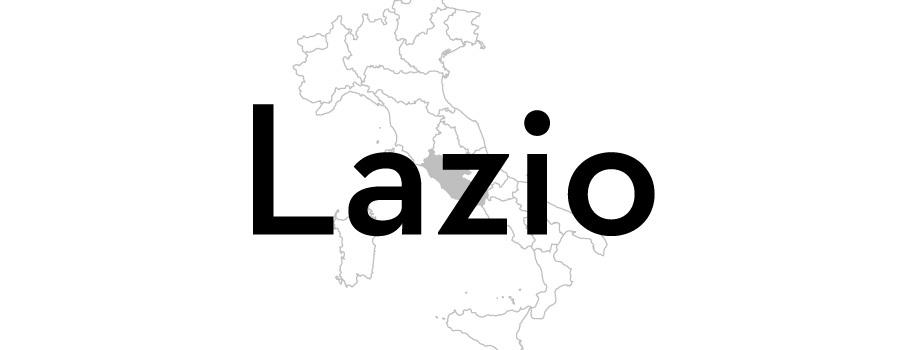
The wines of Lazio
Jacopo Mazzeo takes a look at the wines produced across Lazio, and lists the vintages, bottles and appellations you should look out for.
View more from this series:
Italian wineIf you have ever visited Italy, chances are that you have been to Rome. If you haven’t, then you are probably planning to go at some point. If you have ever eaten Italian food, chances are that you’ve tried carbonara, or at least some sort of interpretation of it. And yet, let me guess, you’ve never tried wines from Lazio, Rome’s own region. Am I right?
To be fair, Lazian wines aren’t very popular. The very few that are haven’t benefited from great praise by international critics. Appellations such as Frascati, Castelli Romani and Orvieto were once relatively trendy, but I doubt that any serious wine drinker would crave to taste any of those. The truth is that until very recently, for decades those wines were all made for immediate profit and no one was bothered too much about quality. As a consequence, Lazio’s image is still lower than that of other emerging Italian wine regions such as Puglia or Sicily. Fortunately, the landscape is rapidly changing; winemakers are making the most of a wide range of climates and an astonishing number of native and international grape varieties to play with.
From a viticultural, as well as cultural, climatic, gastronomic and historic perspective, Lazio is a sort of frontier region. The northern part is very much a continuation of southern Tuscany, while the north east and its inland mountainous areas have much to share with neighbouring Umbria and Abruzzo. The Orvieto DOC, for instance, is partly in Umbria and partly in Lazio. Southern Lazio, below Mount Circeo, has instead a lot in common with Campania. The central region surrounding the province town of Latina is perhaps less ‘borderline', but that’s simply because its marshy lands were only reclaimed and eventually populated as late as the 1930s.
The most common white grapes are Trebbiano and Malvasia, often blended together. When treated with care in the vineyard they can make wines with great refreshing acidity and beautiful scents of candy fruits, Mediterranean herbs, blossom and apricot.The most popular wine based on these grapes is Frascati, a DOCG found not far from Rome.
Castel de Paolis (Malvasia/Trebbiano/Bombino/Bellone) and Epos Riserva Poggio le Volpi (Malvasia di Candia/Malvasia del Lazio/Trebbiano) are clear testimony that today Frascati Superiore DOCG can be a white for grown-ups. The Frascati Superiore Riserva Amacos De Sanctis (Malvasia Puntinata/Bombino) can be easily cellared for a decade or more.
North of Rome, another wine that is benefiting from an increase in quality is the Est! Est!! Est!!! Di Montefiascone DOC. The name originated back in the twelfth century. Legend goes that a bishop, on his way to Rome, sent a servant ahead of him to find a place that served good wine. The servant was instructed to write Est (Latin for there is) on the door of such a place. Allegedly, he was so impressed by the glass (more likely glasses) he had in Montefiascone that he wrote Est! Est!! Est!!! on the local tavern’s door. Le Poggere, by Cantine Falesco (Trebbiano/Roscetto/Malvasia), has good structure and a very fine aromatic character.
Another wine that is traditionally based on Trebbiano is Orvieto DOC, although modern producers are moving towards other allowed grape varieties. This is the case of Sergio Mottura Orvieto DOC (Procanico/Grechetto), with fragrant minty aromas and notes of ripe white stone fruit.
Although most of the wine produced is white, Lazio is home to many serious reds. International varieties such as Merlot, Petit Verdot, Cabernet Sauvignon and Shiraz plus Sangiovese are the most common grapes, very often made into varietal wines. However, recently winegrowers have been investing more in local grapes, mainly Cesanese (near Frosinone), Nero Buono (near Latina) and Aleatico (near Viterbo).
Cesanese del Piglio is in fact the only red wine DOCG within Lazio. It is made with Cesanese d’Affile and Cesanese Commune grapes, which tend to give a marked spicy character. The ‘San Magno’ Corte dei Papi is a serious example that spends fifteen to sixteen months in French oak before bottling. The ‘Campo Novo’ Casale della Ioria, on the contrary, doesn’t go in oak so it’s the ideal choice for those who want to enjoy the fresh fruit varietal character. Cesanese is also made into a sparkling red; not easy to find outside the region but definitely worth a try if you visit the area. Drink it chilled.
Nero Buono was once a blending grape used to add colour, but it’s now made into varietal wines around the town of Cori, where it originated. Try Carpineti ‘Apolide’ or Pietra Pinta ‘Colle Amato’ – both bottles have excellent ageing potential.Carpineti also makes outstanding sparkling wines, all with local grapes. Kius Brut Millesimato (Bellone) and Extra Brut Rose (Nero Buono) will give you an idea of the outstanding potential of these indigenous grapes.
Bellone is more commonly made into still white wine and gaining more and more popularity. The version made by local cooperative Cincinnato is extremely good value, but Carpineti's NZÚ is the real star. It spends eight months in terracotta amphorae, during which time it gains complex notes of ripe white fruit, toast, baked pear, quince and honey and develops a comforting smooth texture.
Aleatico is also common in Tuscany and Chile, where it’s known as Red Muscat (it does indeed share with the Muscat family its characteristic floral aroma), but in Lazio it’s used in the sweet red wine Aleatico di Gradoli DOC. The Archibusacci Riserva is luscious, with a kaleidoscope of red fruits and a never-ending finish; a real treat, trust me.
For those who would rather stick to international varieties, Lazio offers a wealth of warming, velvety, full-bodied reds, often labelled as Lazio IGT, although many DOCs allows their use in the blend. Casale del Giglio, located between Rome and Latina, has an outstanding portfolio of varietal wines that ranges from Petit Verdot to Shiraz and Merlot. Its whites are even more unusual: honestly, how often can one find Petit Manseng outside of southwest France?
South of Latina international varieties will be found in the Circeo DOC. Cantina Villa Gianna makes a very interesting late-harvest version called ‘Innato' (Trebbiano/Chardonnay) that displays good concentration, minerality and an intense candied fruit aroma.
Moscato di Terracina, a DOC from around the same area, is made with 100% indigenous Moscato grapes. Cantina Sant’Andrea HUM shows the real essence of the grape. The grapes are partially late-harvested; the must is then macerated on the skins, which gives rich and exuberant notes of apricot, orange peel, sage and mint. Sant’Andrea also makes a Passito version (sweet wine made with dried grapes). It’s full, with aromas of bread crust, dried apricot, dates, Mediterranean herbs and green olives.
Lazio also offers a slightly lighter sweet wine, Cannellino di Frascati DOCG. Casale Vallechiesa (Malvasia del Lazio/Greco/Bombino) makes a wonderfully perfumed and fine version.
Some of the labels I’ve mentioned won’t be too easy to find outside of Italy (some even beyond Lazio, to be honest), but are certainly worth seeking out while visiting Rome and central Italy. You might even realise that a Moscato Di Terracina is your new favourite Friday-evening aperitif!

